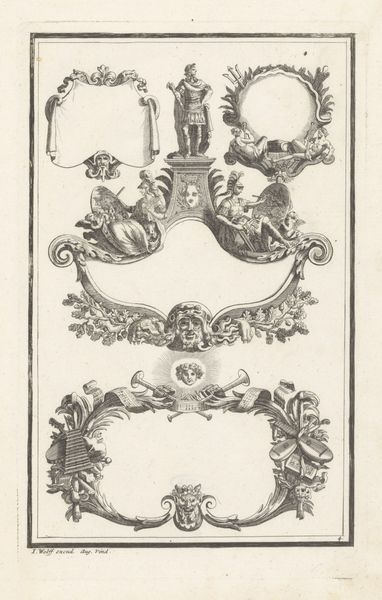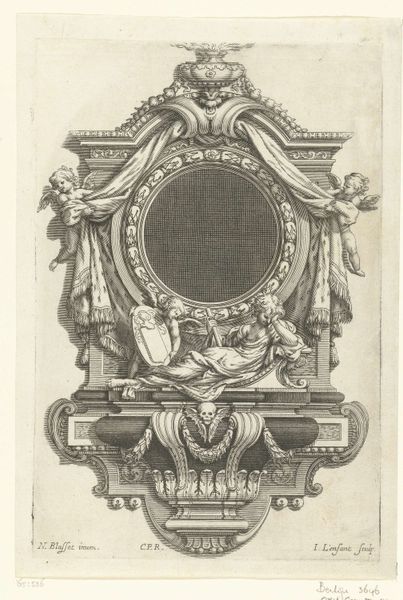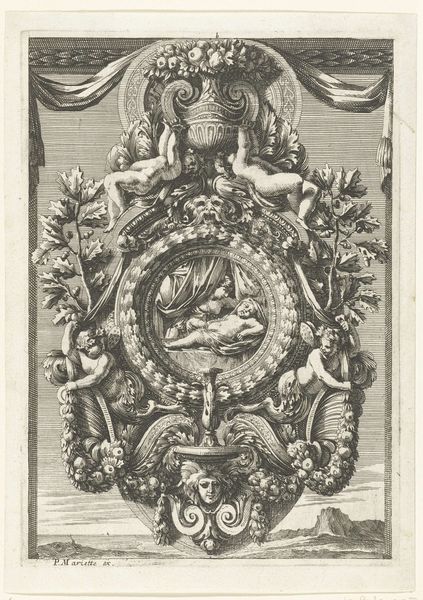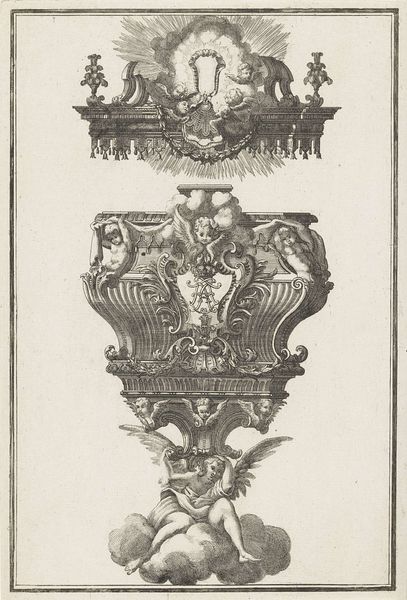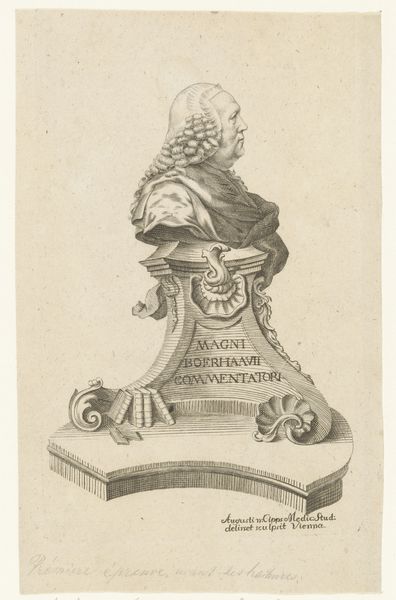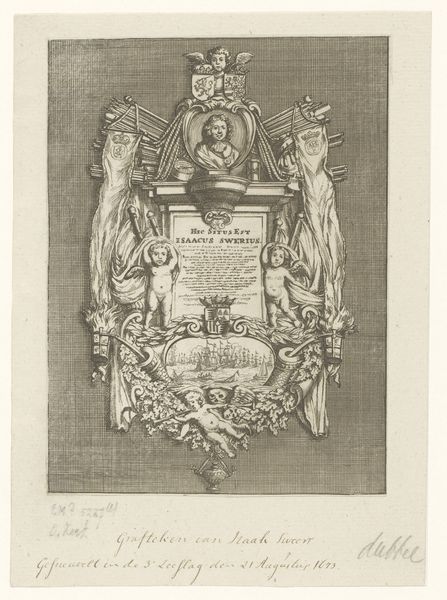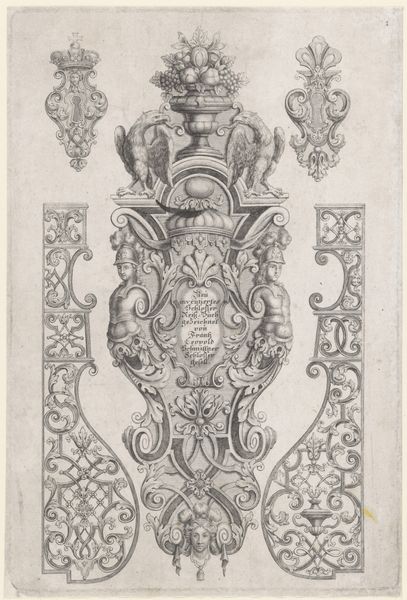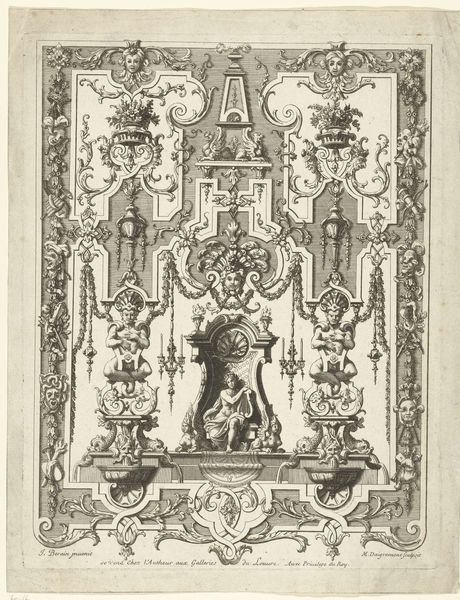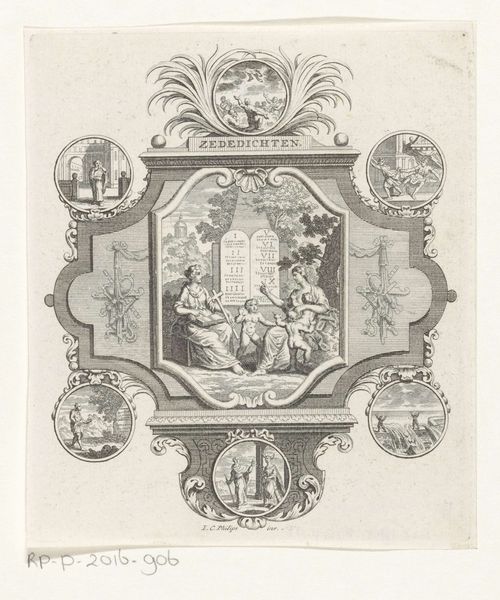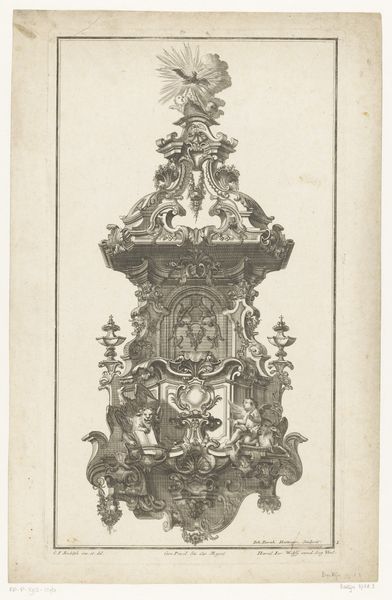
Allegorische compositie op de dood van predikant Hermanus Johannes Krom 1805
0:00
0:00
georgekockers
Rijksmuseum
Dimensions: height 179 mm, width 131 mm
Copyright: Rijks Museum: Open Domain
Curator: This engraving from 1805 is an allegorical composition on the death of Reverend Hermanus Johannes Krom, created by George Kockers and held in the collection of the Rijksmuseum. Editor: Oh, wow. Right away I’m hit by the… theatricality of it all. The heavy drapery, the skull, the putto… it’s both grand and deeply personal, in a strange way. A sort of Baroque memento mori vibe? Curator: Precisely. It’s deeply entrenched in allegorical traditions and iconography, speaking to broader socio-political and religious themes of the time. The skull, of course, represents mortality, and the putto suggests innocence or the soul ascending. We see this in relation to the profile of Hermanus Johannes Krom which creates a really strong tension. Editor: Definitely feel that tension! It's like the guy's silhouette is peering into the land of allegory. Those heavy books at the bottom ground the piece in a world of knowledge, thought, debate, all contrasted with a cherubic, and seriously kinda creepy, babe chillin’ with his blanky at the top! So, the guy must’ve been kinda a big deal for Kockers to put all this symbolic effort in? Curator: Indeed. Commemorative prints like these were significant markers of social status and cultural value. Think of it as a formal eulogy, accessible through print culture. The piece asks us to consider power structures related to religious authority within the community and nation. Editor: It does, doesn't it? All that elaborate framing… it's declaring importance. But you know, seeing it now, it's almost kitsch. Curator: And that’s a critical contemporary interpretation! The distance of time allows us to question the power dynamics inherent in the original commission and its reception, as we negotiate present perceptions against past meanings. Editor: Makes you wonder how Krom himself would feel, seeing himself memorialized this way now! Thanks, it's like stepping back in time, but seeing it all with fresh, irreverent eyes! Curator: Absolutely! History, especially when seen through art, has that reflective quality, it makes us consider present perceptions as past meaning and how to consider those social-political elements.
Comments
No comments
Be the first to comment and join the conversation on the ultimate creative platform.
